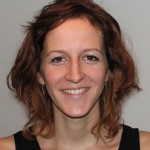 Partner: VV, Sweden
Partner: VV, Sweden
Fellow researcher: Jana Blahová
jany.blahova@gmail.com
Supervisor: Dr. Ole Norberg
Work Summary
The main aim of this project was to develop a spectral colour printing system that takes as input an original colour stimulus, together with the colour gamut of the printing system and models the output for a given substrate. Two main research directions were investigated:
- How the use of multilevel Neugebauer primaries can inuence the printed output?
- What is the optimal design for an ecient spectral vector error diffusion?
Present demand to increase printers gamut results in a growing number of colour channels used in nowadays printers. We can either print and measure or predict all colorant combinations referred to as Neugebauer primaries (NPs). By increasing colorant accuracy using a multilevel approach (e.g. 25%, 50%, 75% and 100% colorant coverage) with a corresponding decrease of resolution one can deal with millions of NPs.
We dedicated our eorts to nding an optimal representation of multilevel NPs using ten channels: cyan, magenta, yellow, black, red, green, blue, light cyan, light magenta and gray. After applying restrictions such as max. 300% colorant coverage, gray component replacement and ΔEab we obtained less than 800 printed and measured multilevel spectral representations of NPs. These measured multilevel selected spectra were then used for halftoning and colorant separation via spectral colour error diffusion.
For the error diusion three tresholding methods were investigated. Only two illuminants were considered for the sake of simplicity: CIE D50 and CIE A. The first thresholding measure was ΔEab for CIE D50 only. The second was a weighted combination of ΔEab for CIE D50 and ΔEab for CIE A. And the third was the root mean square error (RMSE) between sampled reflectances.
The computed error between the best candidate and the target was then diffused to neighboring pixels by Floyd-Steinberg and Kolpatzik-Bouman filters using LabAB, CIELAB and reflectance spectra. The results were evaluated by measuring the printed samples and comparing target and measured values in the perceptually uniform Lab2000HL colour space for both illuminants. The best results were obtained using the second thresholding method, ΔEab calculated as a weighted sum of ΔEab for CIE D50 and ΔEab for CIE A diffused in LabAB using Floyd-Steinberg error weights.